Whether you’re into motorcycles or cars, we all love hearing our machines make popping sounds while decelerating.
Those popping and crackling noises happen at random and remind you (and any people nearby) of the raw, untamed power that internal combustion engines can produce. Music to my ears.
But does popping on deceleration indicate a lean or a rich mixture?
Popping on deceleration can occur because of both lean and rich mixture – it’s very difficult to reliably tell which one is the culprit just from the popping sound only. With that said, the most common reason for popping on deceleration is a lean Air-to-Fuel mixture.
You can determine whether a lean or rich condition is the reason for your motorcycle popping on deceleration by simply looking at the spark plugs and the general symptoms of lean and rich conditions.
But did you know that popping on deceleration can be a sign that your engine’s air-to-fuel mixture is incorrect? We’ll talk about that and more in this article.
What Causes Exhaust Popping on Deceleration?
Popping on deceleration can be caused by both lean or rich Air-to-Fuel mixtures. The most common reason for exhaust popping on deceleration is a lean condition.
A lean or rich condition can be a result of a vacuum leak, blown exhaust gaskets, or internal carburetor problems.
But what makes the engine pop on deceleration when the mixture is lean?
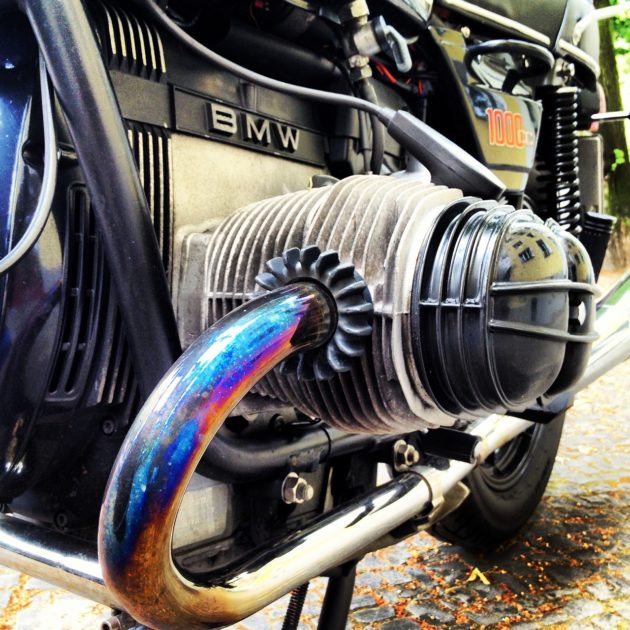
When the engine is running lean, it’s also running hot. The temperature of the combustion chamber is hotter than normal and the exhaust pipe (especially the headers) are hotter than normal as well.
When you’re riding at, let’s say, 8000 RPM and suddenly release the throttle, all of that fuel used to keep the engine at 8000 RPM is now no longer needed and has to go somewhere. All of that extra unburnt fuel exits the combustion chamber through the exhaust port and splashes onto the exhaust headers.
Since the exhaust is hotter than normal from running lean, the unburnt fuel splashes onto the headers and ignites, producing that popping sound on deceleration. Normally, unburnt fuel would not combust inside the exhaust, but since the exhaust is very hot from running lean, it ignites the unburnt fuel.
Is Popping on Deceleration Bad?
Popping on deceleration can be very harmful to your motorcycle, especially long term. In most cases, a small amount of popping on deceleration will not harm your engine, as long as the timing is correct and the engine does not seriously overheat.
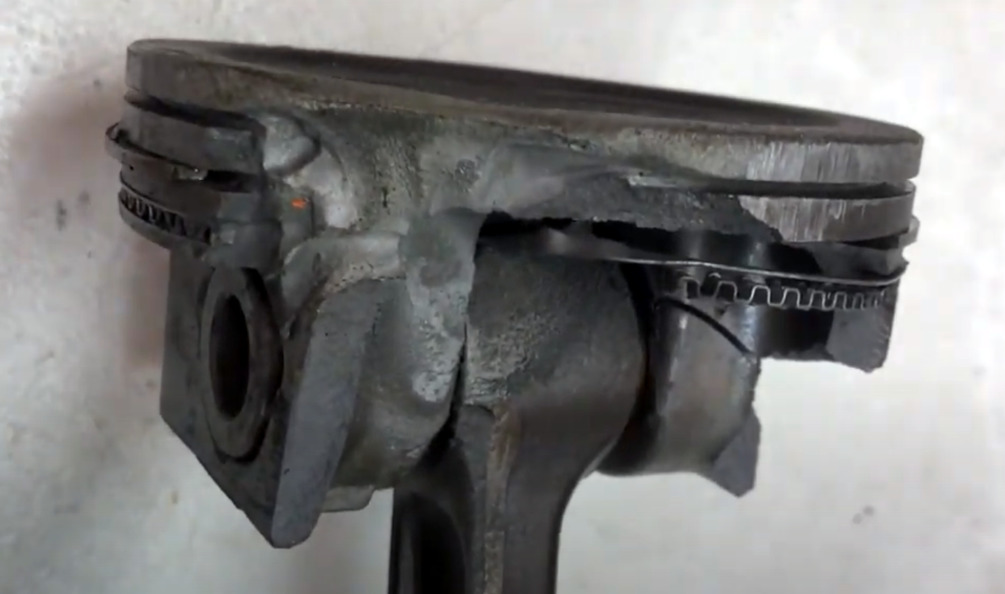
If the lean condition is very bad, your motorcycle’s engine can melt pistons or exhaust valves. No bueno.
It’s always a good idea to take care of popping on deceleration before it becomes a big problem.
Lean & Rich Condition Symptoms
You can quickly determine the cause of your motorcycle popping on deceleration by looking at the most common symptoms of rich and lean conditions.
Symptoms of a Lean ATF Mixture
- Reduced Power – engine feels sluggish at certain RPM range, then accelerates like normal
- Clean/Tan/White Spark Plugs – tell tale sign of a lean condition
- Difficulty Starting
- Runs Poorly While Cold
- Runs Well With Choke On When Warmed up
- Performance Worsens Without The Intake
- Erratic/Poor Idle – RPMs seem to pulse and might cause the engine to stall
- Engine Runs Very Hot – this can be accompanied by pinging or knocking sounds
- Popping on Deceleration
Symptoms of a Rich ATF Mixture
- Acceleration is Flat, Not as Responsive – throttle needs to be open continously to maintain acceleration
- Black/Sooty/Wet spark plugs – tell tale sign of a rich condition, soot is soft and can be removed
- Runs Poorly When Warmed Up
- Increased Fuel Consumption
- Runs Better Without The Intake
- Rough Idle – you need to blip the trottle to keep the engine running
- Sooty exhaust pipe
- Popping on Deceleration
How To Diagnose Popping on Deceleration
Luckily, there are only a handful of reasons why your motorcycle is running lean or rich and popping on deceleration.
Diagnosing Lean Conditions
Since the most common reason for motorcycles popping on deceleration is a lean mixture, let’s cover how to diagnose it first.
1. Rubber Intake Manifold Boots
One of the most common reasons for a lean condition in motorcycles is those darn rubber intake manifold boots. They connect your carburetor/carburetors to the cylinder head. They absolutely must be airtight, otherwise, the air going through the carburetor won’t have enough velocity to lift and spray fuel into the combustion chamber.
Usually, these rubber boots get hard and brittle over time due to constant heat cycles. They’re also tasked with holding the heavy carburetors in place and over time, potholes and vibration cause the intake manifold boots to split at the top.
You can usually tell if your motorcycle’s intake manifold boots are bad by looking for cracks. Another way to check if they’re airtight is by letting the engine run and spraying some carb cleaner on the rubber boots. If they are cracked and leak, then the engine will suck in the carb cleaner through the leaky boots and increase RPM.
2. Cracked or Unplugged Vacuum Lines
Dealing with vacuum lines is never fun. Make sure that all vacuum lines on your motorcycle are leak-free and connected properly to wherever they should go. Most often, the petcock-to-carburetor vacuum line is the reason for vacuum leaks. The vacuum from the carburetor is used to open up the petcock and allow fuel to run into the bowls. It’s used as a safety precaution.
3. Blown Exhaust Gaskets
Another very common reason for popping on deceleration is the exhaust gaskets. They’re known to fail after some time and are quite easy and cheap to replace.
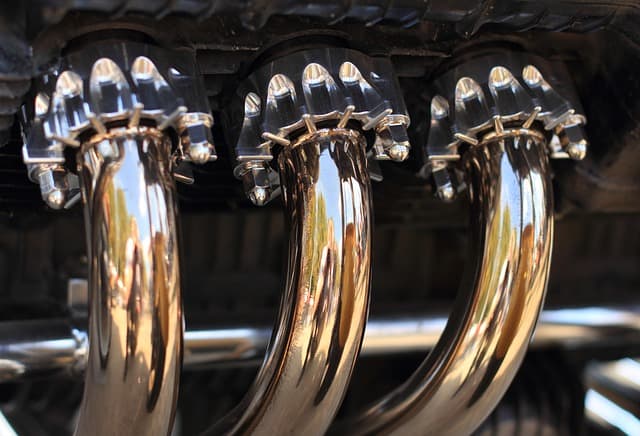
Also, keep in mind that the exhaust header bolts can be loose as well. Sometimes they loosen up over time due to heat cycles and vibration.
Diagnosing and fixing exhaust leaks is beyond the scope of this article, but you can check out our complete guide on diagnosing and fixing exhaust header leaks
4. Check The Spark Plugs
Ask any serious mechanic and he will tell you that you can know almost everything about your engine just by looking at the spark plugs. When the engine is running lean and hot, the spark plugs will look tan, maybe even white. The more light they look, the hotter the engine is running.
Spark plugs are the hands-down best way to determine whether your engine is running lean or rich.
Diagnosing Rich Conditions
Rich conditions are less common and mostly happen due to float problems.
1. Float Set Too High
Carburetors can be pretty annoying. Sometimes, it seems that only looking at the carbs the wrong way is enough to make them stop working, so it’s quite common to disassemble and clean them.
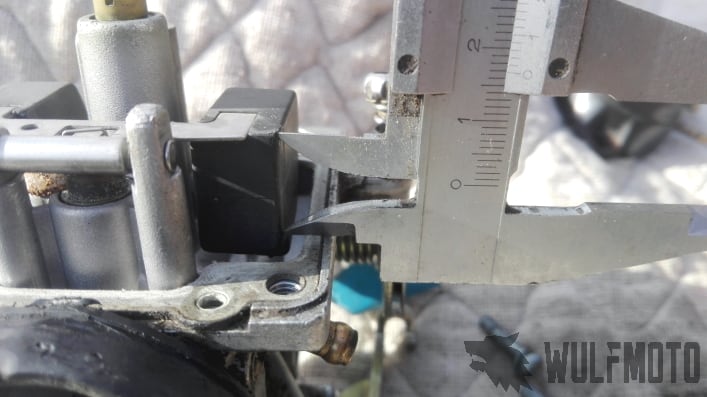
When disassembling carburetors, you will likely have to remove the float. The float is used to maintain a certain level of fuel inside the bowl. If the float is incorrectly adjusted or doesn’t hold air, then fuel will start pouring from the overflow tube. It’s not uncommon to bend the float out of spec accidentally while working on the carburetor.
Make sure that the float is set to the correct height. Click on the link above to learn more and for the float height setting how-to.
2. Stuck or Disconnected Choke
This is pretty rare, but does happen from time to time, especially if you had to rout the choke cable recently. If the choke is stuck shut, then the engine will not be able to suck in enough air and will therefore run rich.
To check if the choke is stuck, you will have to remove the carburetor and get a good look at the choke mechanism to see if it isn’t binding.
3. Main Jet Too Large
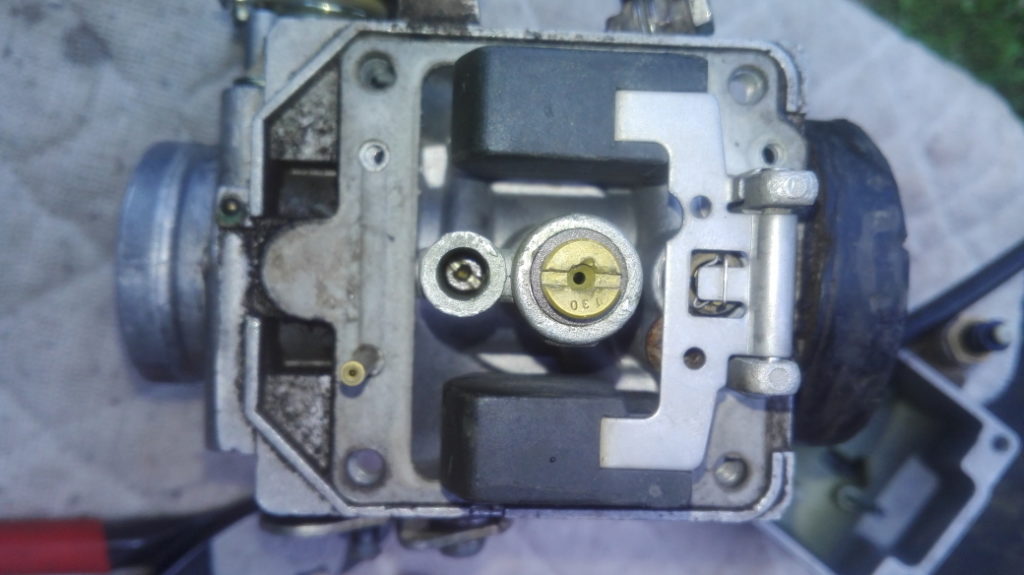
If you’ve recently had to rejet your carburetor, then the reason why your motorcycle is popping on deceleration can be due to the wrong size main jet. Better double-check it.
How To Make Your Motorcycle Exhaust Pop on Command
If you like the sound of your motorcycle exhaust popping (who doesn’t?), then you might be surprised that you can force it to happen at pretty much any time. Now, this is not particularly good for the motorcycle’s engine, but it is a nice trick to get people’s attention and it shouldn’t cause any problems if done occasionally.
- While riding, reach higher RPMs while in gear and hit the kill switch
- Keep riding with the kill switch off for a few seconds
- Quickly turn on the kill switch and leave the throttle closed
- At this point, the exhaust will make a loud bang or small little pops
We do not recommend trying this as riding with the engine off can be extremely dangerous and even deadly.
Final Thoughts
Hopefully, now you’re armed with knowledge and can determine whether popping on deceleration means lean or rich mixture.
While it does sound pretty cool when the motorcycle does that, it’s not exactly good for your engine. In very rare cases, popping on deceleration can completely destroy your engine. Melt the pistons, valves, etc.
There are only a handful of reasons why an engine could run lean or rich, and diagnosing them is pretty easy.
With that said, it’s best to fix popping and crackling noises sooner rather than later, since they are easy to diagnose and can be harmful to your engine in the long run.
Jake is the site’s primary contributor.
Motorcycles and automotive repair have been a big part of his family for generations, therefore it’s only natural that he decided to become a heavy-duty diesel tech.
Outside of work, you’ll find Jake restoring and riding rare street bikes and ATVs.